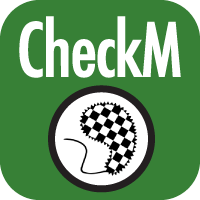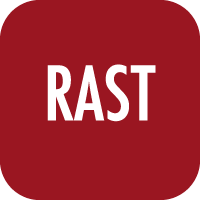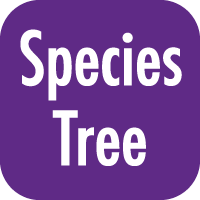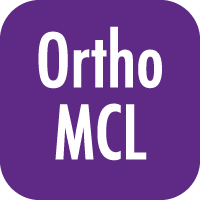Introduction and Experimental Methods
Insect cultures
The initial
Oryzaephilus surinamensis culture (strain JKI) was obtained from the Julius-Kühn-Institute/Federal Research Center for Cultivated Plants (Berlin, Germany) in 2014 and kept in culture since then. Continuous symbiotic and aposymbiotic (see below)
O. surinamensis cultures were maintained in 1.8-L plastic containers, filled with 50 g oat flakes, at 28 °C, 60% relative humidity and a day and night cycles of 16–8 h. Another
O. surinamensis population (strain OsNFRI) was obtained from the National Food Research Institute (Tsukuba, Japan) and used for genome sequencing.
Elimination of O. surinamensis symbionts
An
O. surinamensis sub-population was treated for 12 weeks with tetracycline (150 mg/5g oat flakes) to eliminate their symbionts and then kept for several generations on a normal diet to exclude direct effects of tetracyclin on the host physiology
1. Before the following experiments the aposymbiotic status of this beetle sub-population was confirmed. Therefore, 10 female adult beetles were individually separated in a single jar with oat flakes to lay eggs, as were symbiotic beetles in parallel populations. After 4 weeks, the adult generation was removed before their offspring finished metamorphosis and DNA of these females extracted and the symbiont titer was analyzed by quantitative PCR (see below;
1).
Symbiont genome sequencing, assembly, and annotation
Total DNA was isolated from 20 pooled adult abdomina (without wings) of
O. surinamensis JKI using the Epicentre MasterPureTM Complete DNA and RNA Purification Kit (Illumina Inc., Madison, WI, USA) including RNase digestion. Short-read library preparation and sequencing was performed at the Max-Planck-Genome-center Cologne, Germany (SRR12881563–SRR12881566) on a HiSeq2500 Sequencing System (Illumina Inc., Madison, WI, USA). Two further libraries were created from
O. surinamensis strain OsNFRI. For the first library the DNA was extracted by QIAamp DNA Mini Kit (Qiagen, Germany) from 210 bacteriomes dissected from 60 adults. The library was prepared using the Nextera XT DNA Library Preparation Kit (Illumina Inc., Madison, WI, USA) and sequenced on a MiSeq (Illumina Inc., Madison, WI, USA) of AIST (Japan). For the second library the DNA was extracted by QIAamp DNA Micro Kit (Qiagen, Germany) from 24 bacteriomes dissected from six adults (each individual beetle contains four separate bacteriomes). The library was prepared using the Nextera DNA Library Preparation Kit (Illumina Inc., Madison, WI, USA) and sequenced on a NovaSeq 6000 (Illumina Inc., Madison, WI, USA) of Novagen (China). Adaptor and quality trimming was performed with Trimmomatic
2. In addition, we used two publicly available metagenome libraries of
O. surinamensis (SRR5279855 and SRR6426882).
Long-read sequencing (SRR12881567–SRR12881568) was performed on a MinION Mk1B Sequencing System (Oxford Nanopore Technologies (ONT), Oxford, UK). Upon receipt of flowcells, and again immediately prior to sequencing, the number of pores on flowcells was measured using the MinKNOW software (v18.12.9 and 19.05.0, ONT, Oxford, UK). Flowcells were replaced into their packaging, sealed with parafilm and tape, and stored at 4 °C until use. Library preparation was performed with the Ligation Sequencing Kit (SQK-LSK109, ONT, Oxford, UK) and completed libraries were loaded on a flowcell (FLO-MIN106D, ONT, Oxford, UK) following the manufacturer’s instructions.
Quality-controlled long reads were mapped using a custom-made kraken2 database containing the publicly available genomes of Bacteroidetes bacteria3,4 to filter beetle-associated sequences using the supercomputer Mogon of the Johannes Gutenberg-University (Mainz, Germany). Hybrid assembly of MinION and Illumina reads was performed using SPAdes (v3.13.0) with the default settings5. This resulted in ~70,000 contigs that were then binned using BusyBee Web6, screened for GC content and taxonomic identity to Bacteroidetes bacteria, and additionally checked manually for tRNAs and ribosomal proteins of Bacteroidetes bacteria. In total, 13 contigs were extracted, which were then automatically annotated with RAST (see app citations) using the app Annotate Microbial Assembly (RAST_SDK v0.1.1) on KBase (see app citations). The annotated contigs were plotted using CIRCOS109 (v0.69-6) for the visualization of gene locations, GC content and coverage. Additionally, the completeness of the obtained genome was assessed with the app Assess Genome Quality with CheckM—v1.0.18 in KBase (see app citations).
Phylogenetic analyses
A phylogenetic tree for placement of the intracellular symbiont of
O. surinamensis within the Bacteroidetes was reconstructed using the KBase app Insert Set of Genomes Into Species Tree v2.1.10 (SpeciesTreeBuilder v0.0.12) based on the FastTree2 algorithm (see app citations), including 49 highly conserved Clusters of Orthologous Groups (COG) genes111.
A phylogenetic tree of the aroA gene (which codes for the EPSPS enzyme in the shikimate pathway) from the symbiont of O. surinamensis to predict its sensitivity to glyphosate was performed according to Motta et al. 7. Manually selected aroA sequences from plants, gut bacteria as well as several intracellular insect symbionts were obtained from Uniprot (UniProt Consortium 2019), translated and aligned using MUSCLE112 (v3.8.425) implemented in Geneious Prime 2019 (v2019.1.3, https://www.geneious.com). Phylogenetic reconstruction was performed with FastTree110 (v2.1.12) and PhyML113 (v2.2.4) implemented in Geneious Prime 2019 (v2019.1.3, https://www.geneious.com) using the Jones–Taylor–Thorton model with 20 rate categories and an optimized Gamma20 likelyhood (FastTree) and 1000 bootstrap replicates (PhyML). The obtained trees were visualized using FigTree (v1.4.4, http://tree.bio.ed.ac.uk/software/figtree/).
Comparison with other Bacteroidetes bacteria
Previously published Bacteroidetes genomes were re-annotated with RAST (see app citations) in KBase to compare the bacteria and to estimate the genome-wide nucleotide sequence divergence level. Therefore, we identified single-copy orthologs in each genome pair using OrthoMCL (see app citations) (v2.0) in KBase. KEGG categories were then assessed via GhostKOALA
8 (v2.2) of each gene’s amino acid sequence. Heatmaps were visualized using the ‘ComplexHeatmap´ package in Rstudio (V 1.1.463 with R V3.6.3). CIRCOS
9 (v0.69-6) was used to link orthologous genes.
Genomes of Bacteroidetes bacteria and other bacteria described as cuticle supplementing symbionts were compared in KBase in more detail. Therefore, all genomes were re-annotated with RAST and used to classify all annotated genes according to the SEED Subsystem using the app View Function Profile for Genomes (v1.4.0, SEED Functional Group: Amino Acids and Derivatives; see app citations). The resulting raw count of genes with annotation was visualized as a heatmap using the function ‘heatmap.2’ in the ‘ggplot´ package in Rstudio (V 1.1.463 with R V3.6.3).



































































